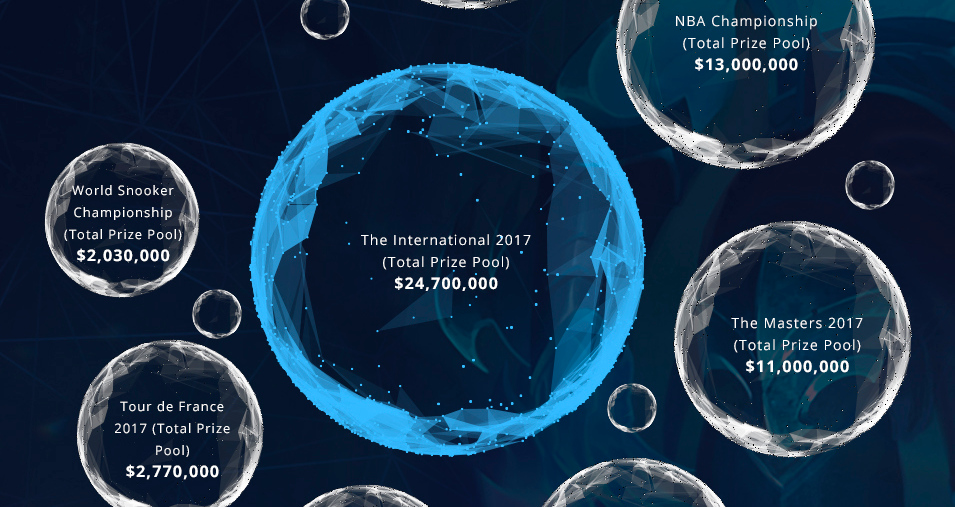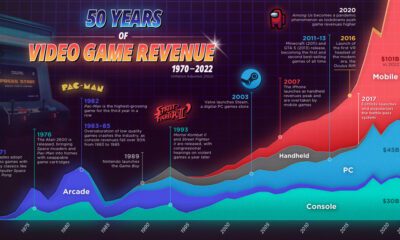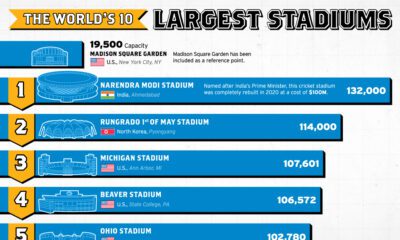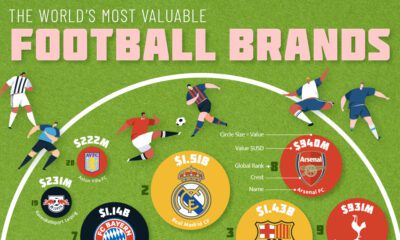Technology
The Business of eSports
For decades, the world’s top athletes have competed in illustrious tournaments such as The Masters or the Tour de France.
People tune in from all over to see these athletes in peak form, and tournaments rake in cash from media rights, advertisements, sponsorships, merchandise, and also the live event itself. In turn, these competitions offer millions of dollars in prize pools for the participants.
But what if there was a new type of sport that upped the ante?
While sport purists might scoff at the idea of any type of competition involving video games – the numbers speak for themselves. The realm of eSports already has tournaments that pack stadiums, offering bigger prize pools than either the Tour de France or The Masters.
And soon, eSports will be a billion dollar business with a global audience of over 300 million fans.
The Booming Business of eSports
Today’s infographic comes to us from Moneypod, and it dives right into the interesting and possibly unfamiliar arena of eSports, which is seeing double-digit growth in all revenue categories from media rights to merchandise sales.

Gaming has always been popular, but the rise of eSports is something new.
The excitement around these competitions pairs the popularity of gaming with changing demographics, growing buying power for consumers in Asia (where the sport is the most popular), increased levels of connectivity, and new technological advancements.
Perhaps even more interesting is that the business of eSports is flourishing as a result – and with packed stadiums, deals with media giants like ESPN, double-digit revenue growth rates, and hundreds of millions of fans, it has been said that this is the year that eSports hits the mainstream.
Latest Market Projections
In the last few months, new market projections on the business of eSports have come out from NewZoo, a market intelligence company focused on games, eSports, and mobile.
Here are their latest projections for audience growth:
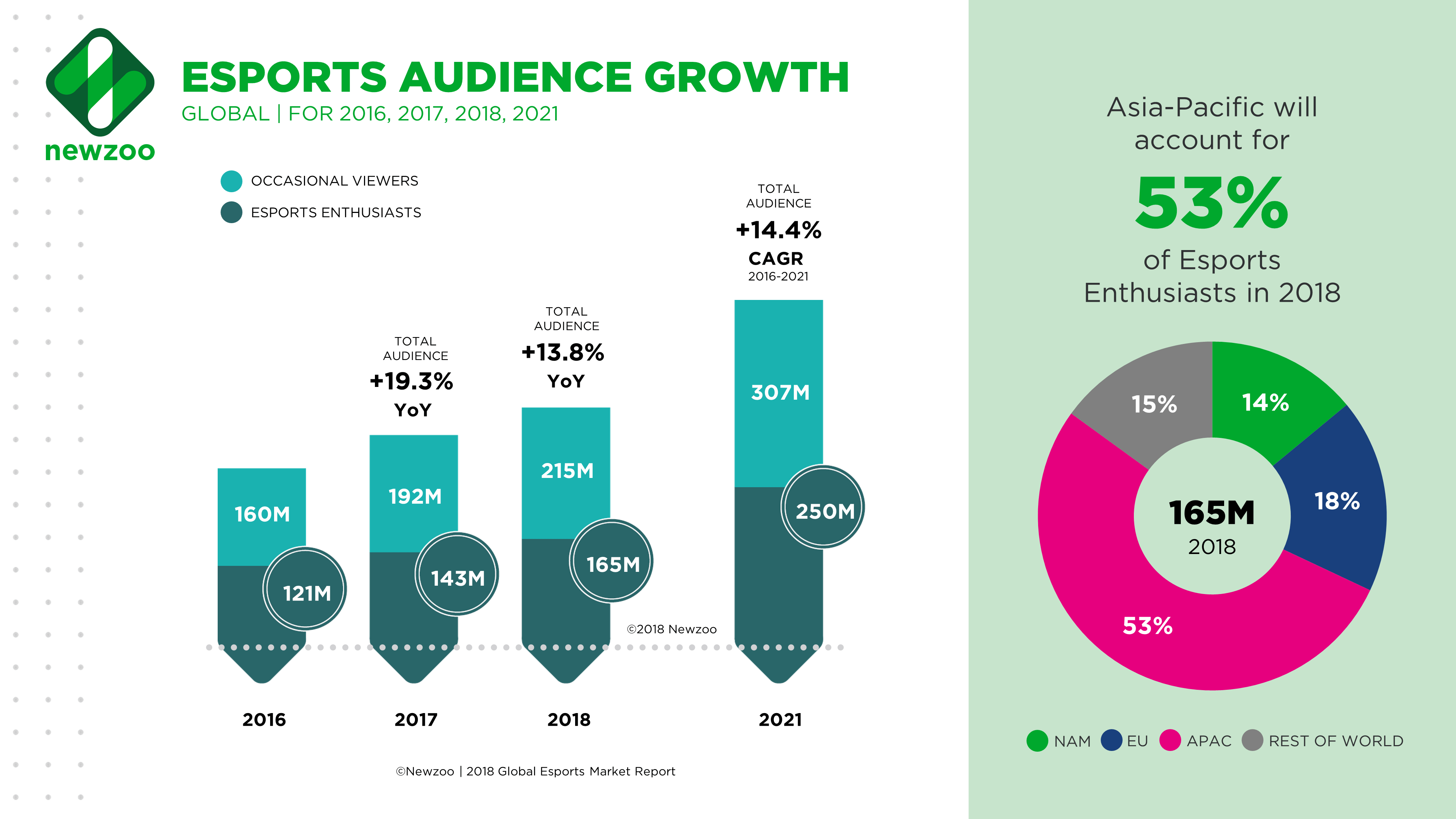
There are 215 million fans today, including 165 million hardcore enthusiasts. The majority of this group, about 53%, resides in the Asia-Pacific region.
Lastly, here is a breakdown of projected revenue streams for 2018:
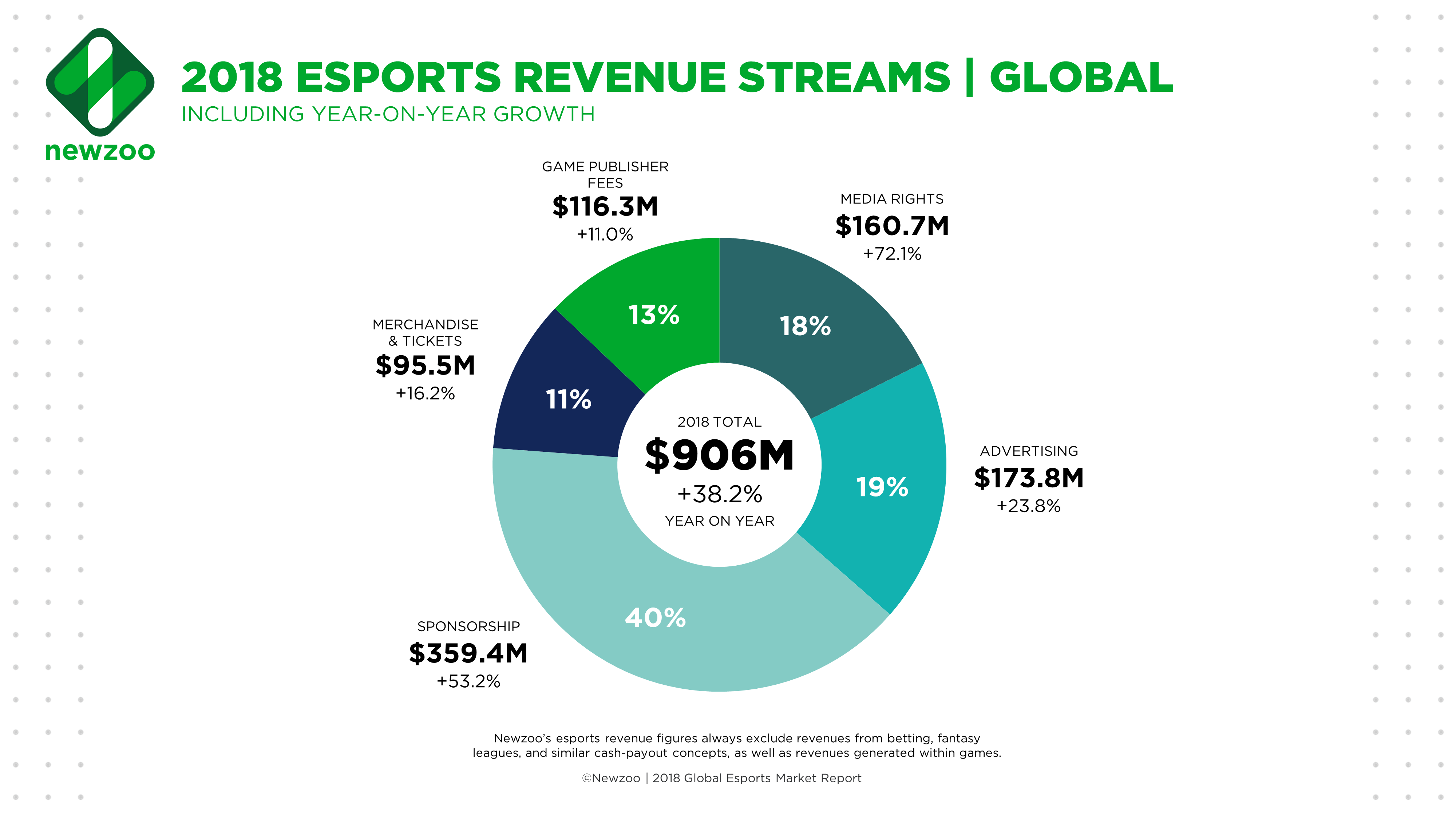
Impressively, media rights is the fastest growing segment at 72.1% growth. The sponsorship segment isn’t far behind at a 53.2% growth rate.
In total, the market is expected to be worth $906 million this year, a solid 38.2% higher than in 2017. This expansion is not expected to stop anytime soon, and in 2019 eSports will be a market in excess of $1 billion in size – a figure that will surely put this emerging space in an even bigger spotlight.
Technology
Ranked: Semiconductor Companies by Industry Revenue Share
Nvidia is coming for Intel’s crown. Samsung is losing ground. AI is transforming the space. We break down revenue for semiconductor companies.
Semiconductor Companies by Industry Revenue Share
This was originally posted on our Voronoi app. Download the app for free on Apple or Android and discover incredible data-driven charts from a variety of trusted sources.
Did you know that some computer chips are now retailing for the price of a new BMW?
As computers invade nearly every sphere of life, so too have the chips that power them, raising the revenues of the businesses dedicated to designing them.
But how did various chipmakers measure against each other last year?
We rank the biggest semiconductor companies by their percentage share of the industry’s revenues in 2023, using data from Omdia research.
Which Chip Company Made the Most Money in 2023?
Market leader and industry-defining veteran Intel still holds the crown for the most revenue in the sector, crossing $50 billion in 2023, or 10% of the broader industry’s topline.
All is not well at Intel, however, with the company’s stock price down over 20% year-to-date after it revealed billion-dollar losses in its foundry business.
| Rank | Company | 2023 Revenue | % of Industry Revenue |
|---|---|---|---|
| 1 | Intel | $51B | 9.4% |
| 2 | NVIDIA | $49B | 9.0% |
| 3 | Samsung Electronics | $44B | 8.1% |
| 4 | Qualcomm | $31B | 5.7% |
| 5 | Broadcom | $28B | 5.2% |
| 6 | SK Hynix | $24B | 4.4% |
| 7 | AMD | $22B | 4.1% |
| 8 | Apple | $19B | 3.4% |
| 9 | Infineon Tech | $17B | 3.2% |
| 10 | STMicroelectronics | $17B | 3.2% |
| 11 | Texas Instruments | $17B | 3.1% |
| 12 | Micron Technology | $16B | 2.9% |
| 13 | MediaTek | $14B | 2.6% |
| 14 | NXP | $13B | 2.4% |
| 15 | Analog Devices | $12B | 2.2% |
| 16 | Renesas Electronics Corporation | $11B | 1.9% |
| 17 | Sony Semiconductor Solutions Corporation | $10B | 1.9% |
| 18 | Microchip Technology | $8B | 1.5% |
| 19 | Onsemi | $8B | 1.4% |
| 20 | KIOXIA Corporation | $7B | 1.3% |
| N/A | Others | $126B | 23.2% |
| N/A | Total | $545B | 100% |
Note: Figures are rounded. Totals and percentages may not sum to 100.
Meanwhile, Nvidia is very close to overtaking Intel, after declaring $49 billion of topline revenue for 2023. This is more than double its 2022 revenue ($21 billion), increasing its share of industry revenues to 9%.
Nvidia’s meteoric rise has gotten a huge thumbs-up from investors. It became a trillion dollar stock last year, and broke the single-day gain record for market capitalization this year.
Other chipmakers haven’t been as successful. Out of the top 20 semiconductor companies by revenue, 12 did not match their 2022 revenues, including big names like Intel, Samsung, and AMD.
The Many Different Types of Chipmakers
All of these companies may belong to the same industry, but they don’t focus on the same niche.
According to Investopedia, there are four major types of chips, depending on their functionality: microprocessors, memory chips, standard chips, and complex systems on a chip.
Nvidia’s core business was once GPUs for computers (graphics processing units), but in recent years this has drastically shifted towards microprocessors for analytics and AI.
These specialized chips seem to be where the majority of growth is occurring within the sector. For example, companies that are largely in the memory segment—Samsung, SK Hynix, and Micron Technology—saw peak revenues in the mid-2010s.
-

 Maps2 weeks ago
Maps2 weeks agoMapped: Average Wages Across Europe
-

 Money1 week ago
Money1 week agoWhich States Have the Highest Minimum Wage in America?
-

 Real Estate1 week ago
Real Estate1 week agoRanked: The Most Valuable Housing Markets in America
-

 Markets1 week ago
Markets1 week agoCharted: Big Four Market Share by S&P 500 Audits
-

 AI1 week ago
AI1 week agoThe Stock Performance of U.S. Chipmakers So Far in 2024
-

 Automotive1 week ago
Automotive1 week agoAlmost Every EV Stock is Down After Q1 2024
-

 Money2 weeks ago
Money2 weeks agoWhere Does One U.S. Tax Dollar Go?
-

 Green2 weeks ago
Green2 weeks agoRanked: Top Countries by Total Forest Loss Since 2001

